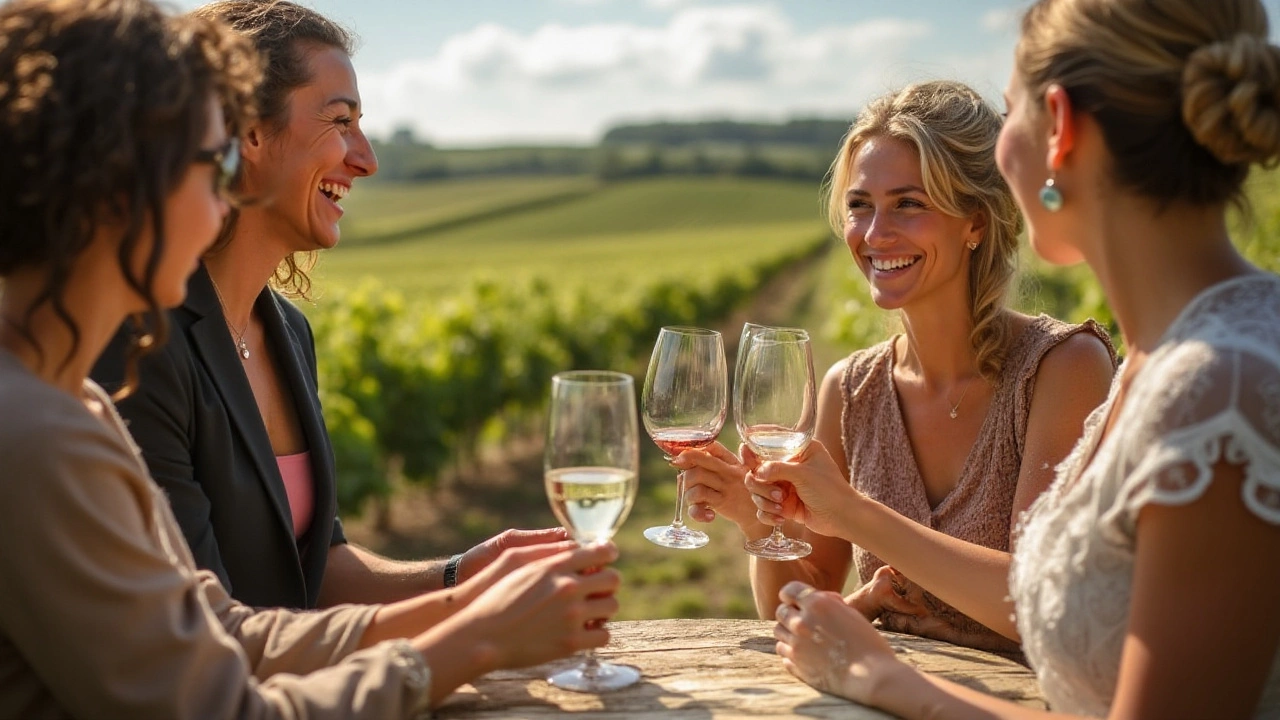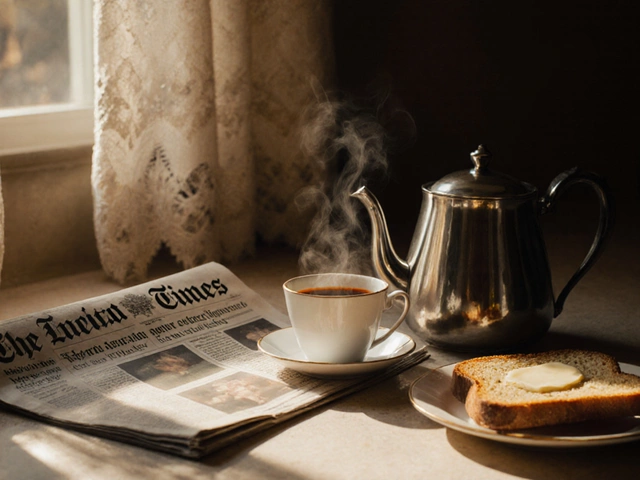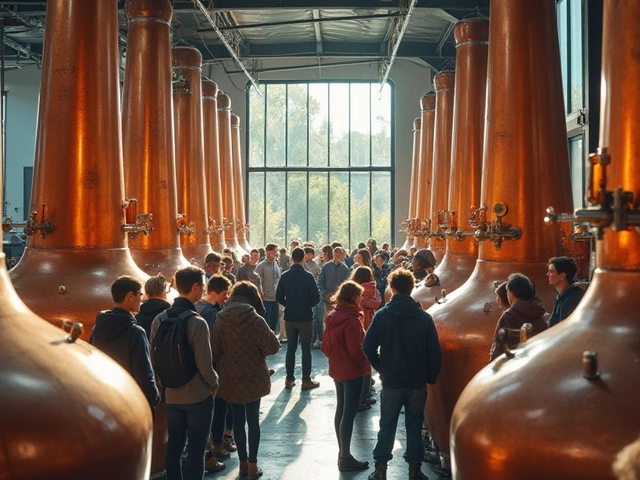Stepping into a winery can feel like crossing into another world—a realm of rolling vineyards, oak barrels, and the enchanting process of fermentation. While the wine invites you in, the experience is enriched by understanding the unwritten rules that guide these tasting journeys. Knowing a bit about winery etiquette not only shows respect to the establishment and staff but also deepens your appreciation of the art of winemaking.
Whether you're embarking on your first vineyard visit or you're an aficionado looking to refine your approach, this guide sheds light on the dos and don'ts of enjoying wine tasting to the fullest. From the moment you step onto the grounds to the swirl of the glass and the savor of a sip, these insights will help you navigate the experience with grace and confidence. Let’s take a closer look at how to make your winery visit both enjoyable and respectful.
Dressing for the Occasion
When visiting a winery, your attire should reflect both the casual elegance of the setting and the practical needs of the experience. Picture a sunny afternoon amongst the vines—a relaxed ambiance that matches the laid-back yet sophisticated nature of wine culture. Dress codes can vary, so consider the location and type of winery. Many vineyards are happy with casual wear, leaning towards smart casual. This means neat pants or skirts, paired with a nice top or a collared shirt. Opt for clothes that are comfortable to sit in, as tasting sessions often involve sitting at quaint tables overlooking stunning landscapes. Always check for any specific dress codes on the winery's website before your visit, as some may have more formal atmospheres.
One key aspect to remember is footwear. Vineyards and winery grounds are not always paved; they might include rocky paths or grassy fields. Select shoes that are not only stylish but functional. Women often find that avoiding high heels is wise, as these can sink into soft ground, whereas men might opt for loafers or clean sneakers. Light layers are practical, especially if you are touring cellars, which might be cooler than the outdoor areas. A hat could be a thoughtful addition for walking outdoors in the sun, offering protection and adding a touch of flair to your look.
Discussing wine and fashion, John Hamilton, a veteran sommelier, once remarked,
"The right attire is an appreciation of the setting; it's about balancing tradition and personal style in a way that respects the artistry of winemaking."This quote captures the essence of dressing for a winery—it's not about stifling personal expression but aligning with the unique atmosphere of vineyards. Sophisticated simplicity often triumphs over flashy fashion. Neutral colors like beige, soft blues, and classic whites complement the beauty of the vineyards while providing a wardrobe that doesn't outshine the wines you're eager to taste.
Finally, accessorize wisely. Consider a crossbody bag or a stylish backpack to keep your hands free, allowing you to hold your glass properly or take notes. It’s practical to carry a small notepad or your smartphone to jot down notes, as remembering which wines you enjoyed will enhance future selections. Opt for subtle accessories—think minimal jewelry that won't clang or distract during tastings. Sunglasses are a practical choice too, given the often sunny settings, adding an effortless chic to your ensemble. With these tips, you'll feel perfectly at ease, navigating the vineyard like a pro.
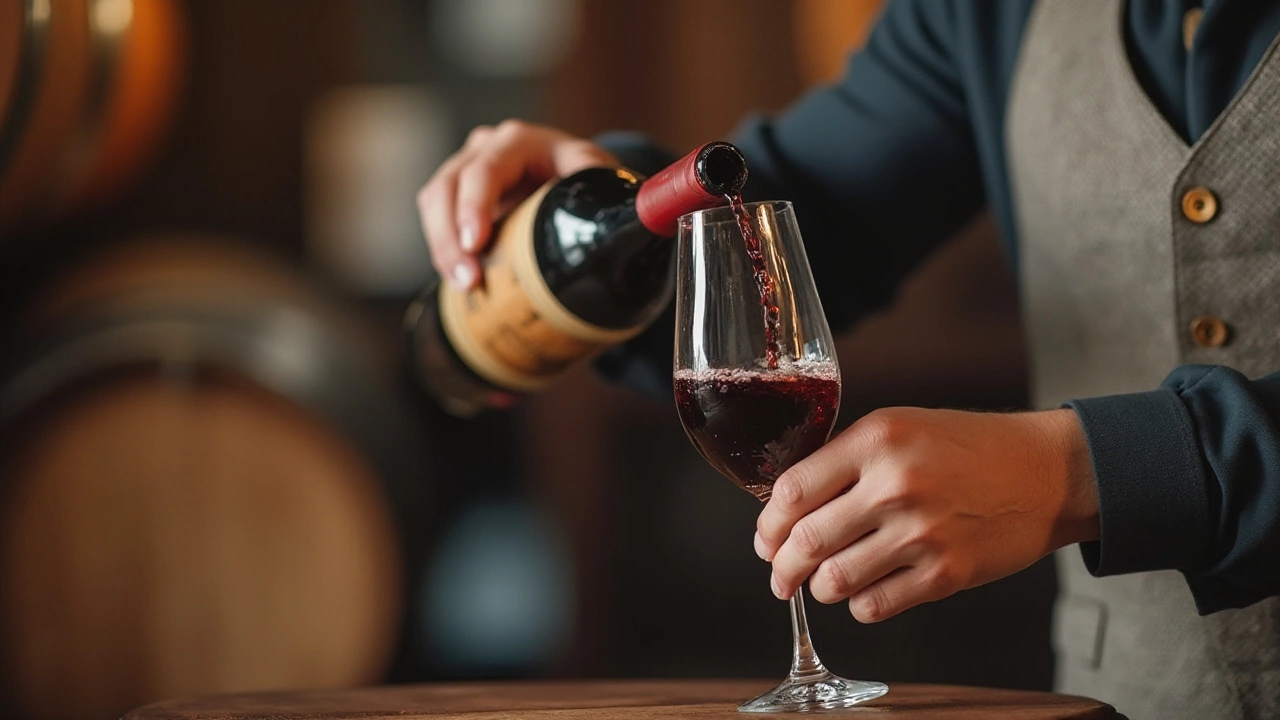
Tasting Like a Pro
As you stand at the tasting bar, glass in hand, there's more happening than just the simple act of drinking wine. The art of wine tasting involves a thoughtful process that allows you to fully appreciate the nuances and complexities of each bottle. With proper techniques and understanding, you can enhance your sensory experience and engage more deeply with both the wine and the winemaker's craft. Tasting like a pro doesn’t mean changing who you are, but instead embracing the sensory journey that each sip brings.
Start by examining the wine’s appearance. Hold the glass against a light or a pale background and observe the color and clarity. These visual cues can tell you a lot about the grape variety, the age of the wine, and sometimes its production method. A younger red might exhibit a vibrant ruby hue, while older wines often take on a brick-red shade. Whites, on the other hand, range from pale straw to deeper gold tones, hinting at their age or oak influence. Engaging with the Hosts, a key part of winery etiquette, involves more than polite conversation—it’s about fostering a connection with the knowledge and dedication that went into each bottle.
Next, give the wine a swirl. This simple action aerates the wine, releasing its aroma compounds and allowing you to catch a whiff of its character. The smell of wine, or 'nose', offers hints of its flavor profile even before you take your first sip. Take a moment to inhale its fragrance deeply; is it fruity, spicy, earthy? Wine experts often say that most of wine tasting is actually wine smelling, and here lies the foundation of savoring the experience.
Now, it's time to taste. Take a modest sip and let the wine coat your palate. Notice the flavor journey—from the initial taste to the lingering finish. Is it sweet or dry, light or full-bodied? Pay attention to the balance of acidity, tannins, and alcohol, which can dramatically shape the wine's texture and feel. Often, a wine tasting experience brings out nuances that you may have not expected initially, each sip deepening your understanding of that particular vintage.
It's important to know that palate fatigue is real, especially if you're tasting multiple wines. Don't hesitate to utilize the spit bucket provided. Spitting is not considered poor manners in wine culture; it's a way to stay sharp and appreciate each wine on its own merit without becoming overwhelmed. This highlights the critical aspect of pacing yourself during a tasting, especially if a tour includes several stops.
"Wine is sunlight, held together by water." — Galileo Galilei
Finally, sharing your impressions and questions with the staff shows genuine interest and engagement. They are often eager to discuss the viticulture, the soil, or the specific weather conditions that influenced their wine that season. Being curious and open can lead to a richer understanding and a more rewarding tasting experience. Knowing how to taste wine like a pro not only enhances your appreciation but also turns every wine tasting opportunity into a memorable journey of discovery and delight.

Engaging with the Hosts
Engaging with the hosts during a winery visit is much like dancing the tango; it's an interaction that requires subtlety, awareness, and a dose of enthusiasm. The hosts, often the winemakers themselves or staff intimately familiar with the craft, possess a wealth of knowledge about the wines you’re tasting. Initiating a conversation is a great start. Ask them about the history of the vineyards or the philosophy behind their winemaking process. Dive deeper beyond the label—every bottle has a story waiting to be shared. Your earnestness to learn not only enriches your experience but also honors the passion they pour into every glass.
Indeed, the art of conversation should be matched with a listening ear. Pay close attention to what the hosts share because it's in these details that the magic lies. Learning why a particular wine exhibits certain flavors or understanding the conditions that shaped a specific vintage cultivates a deeper appreciation. Don't shy away from discussing flavors and aromas you’re not familiar with—it's all part of evolving your palate. According to the renowned sommelier Jancis Robinson, "The sheer diversity of flavors in wine is one of its greatest marvels."
–Jancis Robinson
On a more practical note, showing genuine interest often means putting your phone away. Modern life is full of distractions, but when you're present in the moment, you can absorb the nuances of the tasting experience and, in turn, convey respect for the host’s work. An authentic conversation often leads to wonderful, unexpected discoveries about the wines and even some behind-the-scenes glimpses into winery operations. If you're fortunate, the host may open a special bottle off the typical tasting menu for those who demonstrate genuine enthusiasm.
Admittedly, every winery has its own vibe; small family-run wineries might offer a more intimate conversation, while larger establishments could have structured presentations. Adapt your approach accordingly. Insightful questions such as 'What goes into determining the harvest time?' or 'How do varying barrels influence the taste profile?' reveal your interest and engagement. An encounter with the host can employ not just words but also gestures of gratitude. Simply thanking them for their time and revealing anecdotes about your own connection to wines might foster genuine connections that last well beyond the visit.
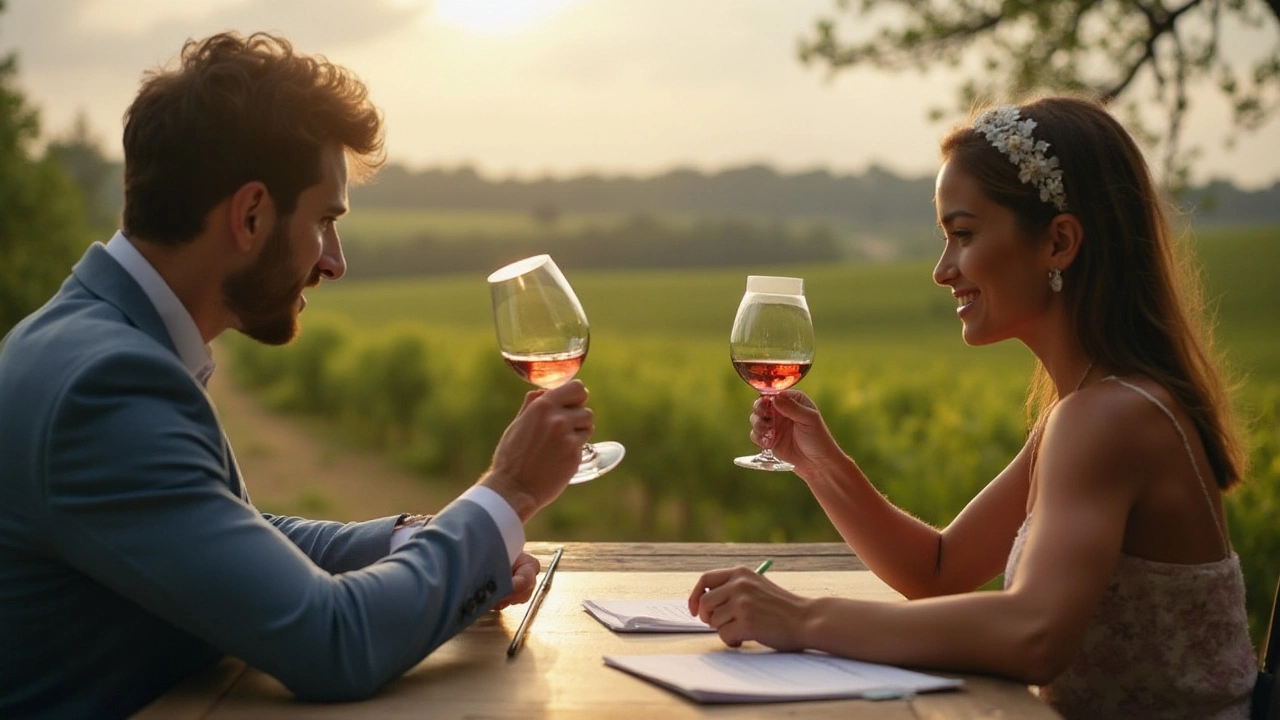
Respecting the Venue
When visiting a winery, it's important to recognize that you are a guest not only in someone's place of business but also in a space that often reflects a deep personal passion and heritage. Many wineries, especially those that are family-run, have been cultivated over generations, with the land holding stories and traditions that date back centuries. This historical connection is something to be mindful of as you stroll through the vineyard and facilities. These are not just commercial spaces; they are living legacies.
Showing respect begins with understanding and following the rules and guidelines specific to each winery. These might include staying within designated visitor areas, not touching equipment or barrels unless invited, and keeping voices at a respectful volume, especially if the venue is part of a quiet or serene rural landscape. It's worth remembering that winemaking can be an intricate process, with many wineries operating under strict timelines and environmental requirements, which guests should respect.
"Wine enters through the mouth, and love, the eyes. I raise the glass to my mouth, I look at you, and I sigh." - W.B. Yeats
Understanding the environmental stewardship many vineyards practice is also a critical component of respecting the venue. Understand that many wineries invest heavily in sustainable practices. From using organic pest control to managing water resources efficiently, they take considerable measures to minimize their ecological footprint. Guests, therefore, should avoid littering and should use the receptacles provided. Bringing your own reusable water bottle instead of relying on single-use plastics is a simple yet profound gesture of respect for the vineyard's efforts toward sustainability.
If you're part of a larger group, take care to familiarize yourself with any pre-arranged protocols. Group tastings can offer a different dynamic compared to individual visits, and adhering to organized schedules is key. If food is provided or allowed, ensure it is consumed in designated areas and that any waste is disposed of properly. If you're bringing children along, confirm that the venue is child-friendly and ensure that they are supervised at all times—wineries can be expansive spaces with areas that may not be safe for unsupervised exploration.
Photography, while usually welcome at wineries, should still be approached with a degree of decorum. It's always best to ask if there are restricted areas, especially where proprietary techniques and setups are concerned. Some winemakers guard certain processes closely as aspects of their unique craft, which keeps their offerings distinct. Additionally, avoid drones or other intrusive equipment unless expressly permitted, as these can disrupt both the atmosphere and the operations of the venue.
Lastly, respect the staff, from the hosts to the vineyard workers themselves. Acknowledging their expertise by listening to their stories and advice can enrich your understanding of the wine you taste. Often, these professionals hold invaluable insights into the unique character and history of each wine, making your tasting experience far more comprehensive and rewarding. When you toast at a winery, remember, you're not only celebrating the flavors but also the dedication and care that went into each bottle.
